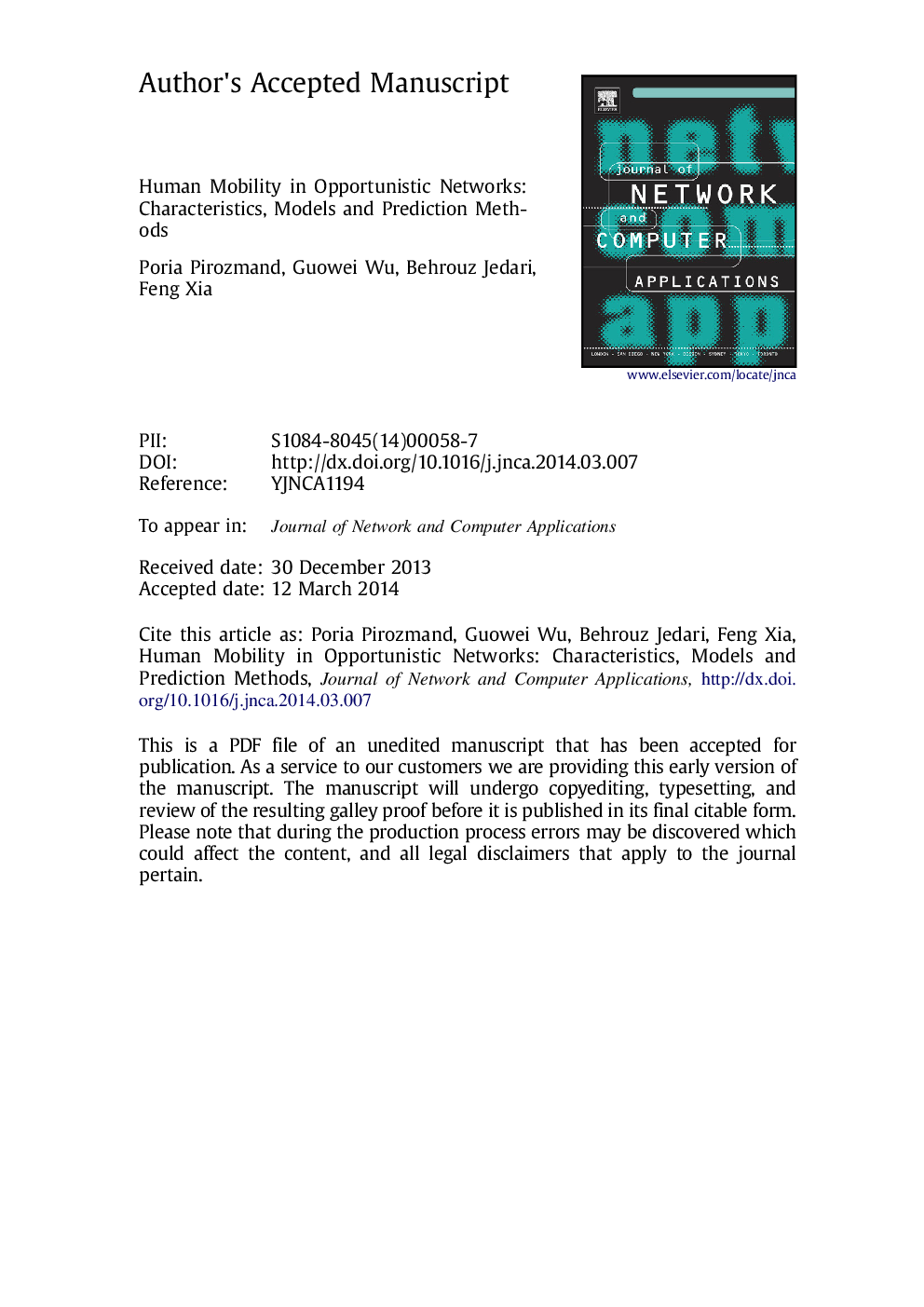| Article ID | Journal | Published Year | Pages | File Type |
|---|---|---|---|---|
| 6885086 | Journal of Network and Computer Applications | 2014 | 31 Pages |
Abstract
Opportunistic networks (OppNets) are modern types of intermittently connected networks in which mobile users communicate with each other via their short-range devices to share data among interested observers. In this setting, humans are the main carriers of mobile devices. As such, this mobility can be exploited by retrieving inherent user habits, interests, and social features for the simulation and evaluation of various scenarios. Several research challenges concerning human mobility in OppNets have been explored in the literature recently. In this paper, we present a thorough survey of human mobility issues in three main groups (1) mobility characteristics, (2) mobility models and traces, and (3) mobility prediction techniques. Firstly, spatial, temporal, and connectivity properties of human motion are explored. Secondly, real mobility traces which have been captured using Bluetooth/Wi-Fi technologies or location-based social networks are summarized. Furthermore, simulation-based mobility models are categorized and state-of-the art articles in each category are highlighted. Thirdly, new human mobility prediction techniques which aim to forecast the three aspects of human mobility, i.e.; users׳ next walks, stay duration and contact opportunities are studied comparatively. To conclude, some major open issues are outlined.
Related Topics
Physical Sciences and Engineering
Computer Science
Computer Networks and Communications
Authors
Poria Pirozmand, Guowei Wu, Behrouz Jedari, Feng Xia,
